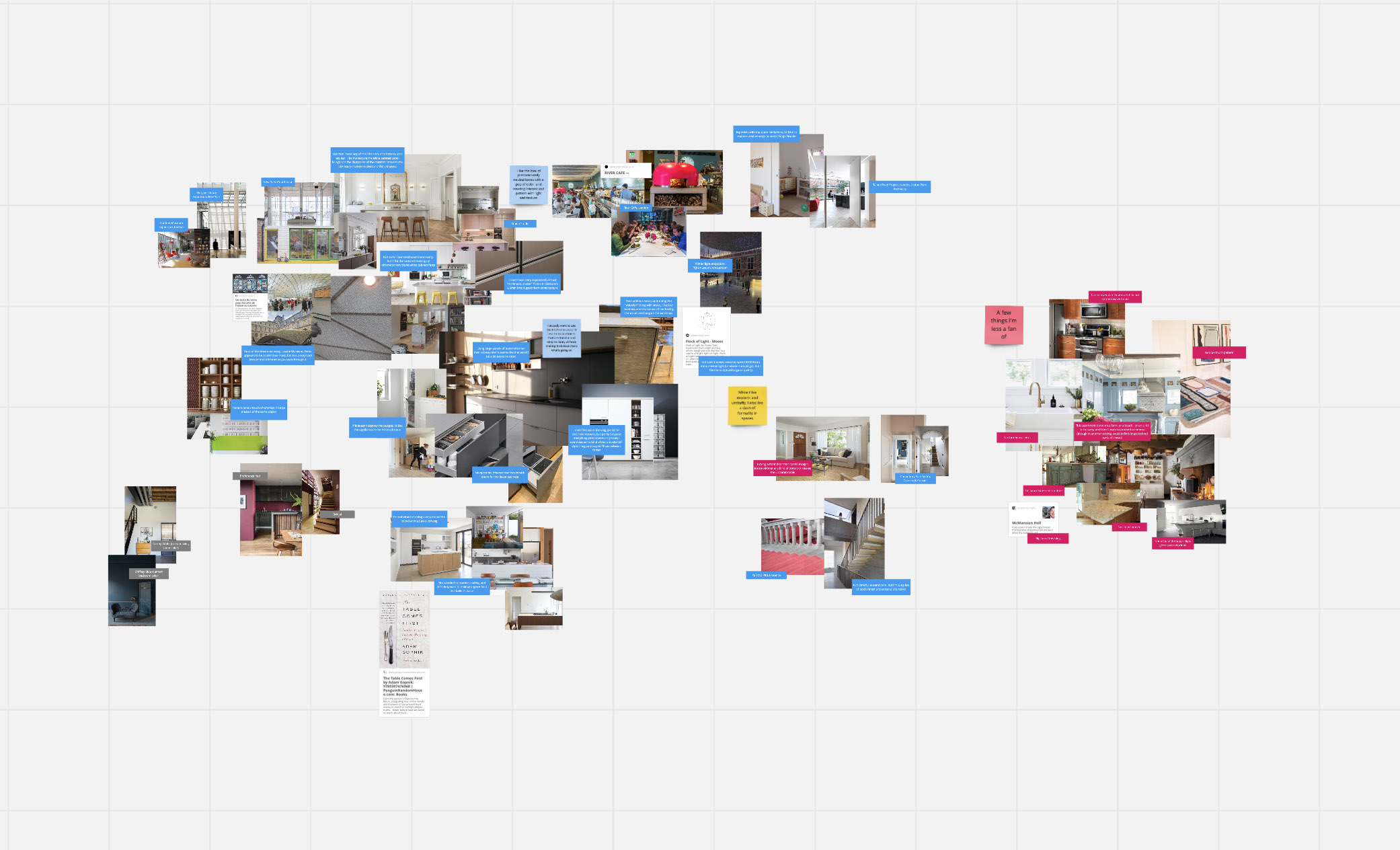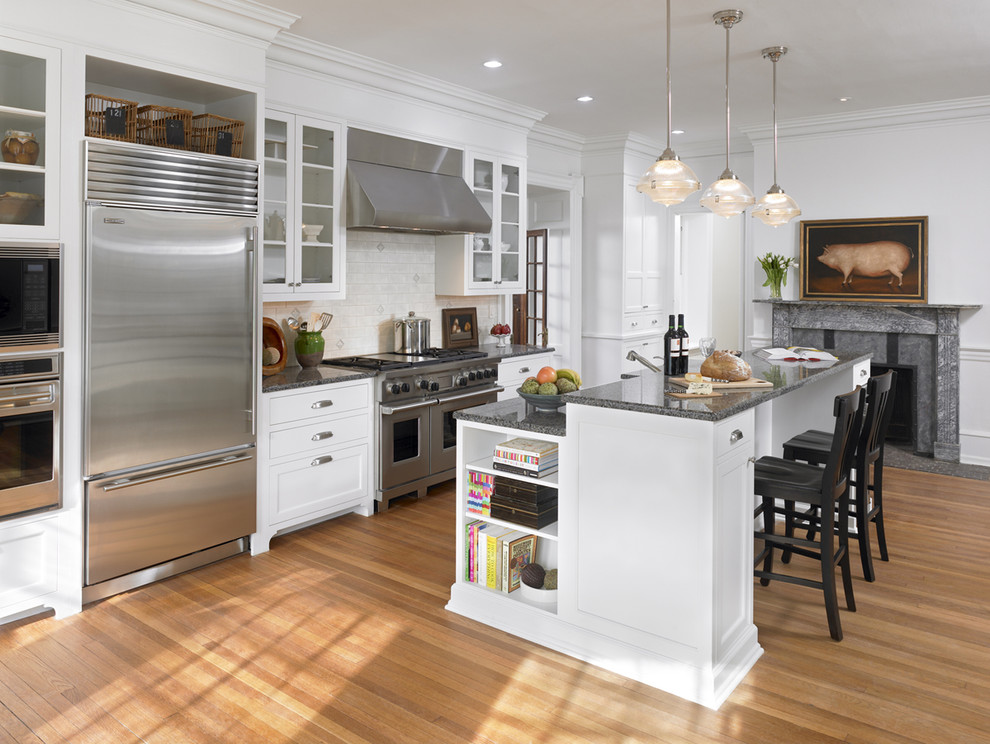Finding an Architect

I’ve crossed the Rubicon. On Friday, I signed the paperwork to engage an architectural practice and get the project underway. I’ll have more to share about what I’m doing later once the actual design and build processes get underway. For now, I’ll walk through the mechanics of even finding an architect to begin with.
From the beginning, I’ve wanted to hire an architect. But it wasn’t entirely clear whether my project was big enough to justify hiring one. Obviously if you’re building a house, you’ll need an architect. If the project is really small — replacing a bathroom vanity or installing built-in bookcases — you probably don’t need an architect. Others advised me that an architect would add to the project cost, and that a good design-build contractor could deal with my changes.
Once I found a credible contractor, though, it became clear I needed an architect in at least some capacity. Their stated reason had something to do with regulations governing fire suppression systems. There’s a fire sprinkler in my kitchen, and it’s possible it may need to be moved. That, apparently, requires a registered architect to sign off on the plans.
Between my ambivalence about the contractor to begin with and the supposed requirement, when I decided to dust this project off around a month ago I decided I would at least explore the idea of hiring an architect. If they told me my project was too small, at least I’d know that I had made the right choice.
Finding an architect, though, proved to be harder than I would’ve guessed. Most of the obvious resources like Houzz were unhelpful in that the sort order of firms tended to correlate with the size or “prestige” of the practice, and there weren’t a lot of other levers to find what I was looking for.
Whether it’s being in New England or being in the US more generally, most firms seem to cater to people who want something either very cookie cutter or very showy. There are lots of photos of double-wide Wolf ranges that cost more than some compact cars and other touches that look generically expensive.

There are places like Architizer or even Instagram. But the listing sites don’t tend to be comprehensive — the practice I hired isn’t on Architizer, for example — and Instagram is hard to browse if you’re looking for more than “inspiration.”
In the end, I found a firm through a combination of meticulousness and good luck. The initial shortlist of firms came from literally clicking on close to 100 firms’ listings on Houzz and though more straightforward Web searches. From there, a few never wrote back to my emails, and a few set up initial consultations.
Despite what I would’ve guessed, a lot of firms have such a backlog of work that at least a few couldn’t have fit me in until the next year. Fortunately, the director of one practice was able to refer me to BOS|UA, who (most importantly) really impressed me, and had enough capacity to start my small project immediately to boot.
Every practice I talked to made me feel pretty confident that hiring an architect was the right choice. Even the fanciest-looking practices that listed very big, very expensive projects on their websites seemed very down to earth and willing to take on my project. They all, even in my brief consultations, had ideas that never would have crossed my mind. The architects at the practice I wound up hiring suggested, for instance, that there were a few ways I might avoid moving my electrical panel. Avoiding that one change alone probably covers the cost of hiring them!
Speaking of which, I have since discovered that architects’ fees typically run about 10-15% of the construction cost. In other words, for a $50,000 project, the architects’ fees would run round $5,000 to $7,500. Some will literally charge a fraction of the construction bill. Others — including all the firms that made my shortlist, which was not intentional but probably not a coincidence — bill either hourly or with fixed fees. As one person put it to me, there really isn’t a lot more work involved for the architects if I happen to want a really expensive refrigerator.
After the initial consultation, the architects sent over a formal proposal. Basically, a contract about the work, including a rough schedule, pricing, and each side’s obligations. Signing that document on Friday is what kicked off this whole process.
All-in, I’ll be spending about $4500 in architects’ fees, which works out to something like 15% of my (very provisional) $30,000 construction budget. There’s some variability in the cost of the construction administration phase.
The fee structure breaks down roughly equally through the different major design phases. The first chunk to establish the current site conditions, the second to build a rough schematic design, the third to develop more detailed drawings for regulatory approval, and fourth the final detailed drawings and final budget tweaks. That comes to about $4,000.
From there, I’ve chosen to spend the extra money — billed hourly — to have the architects manage the team of contractors actually doing the construction. On the surface it seems like a slightly absurd level of bureaucracy for such a small project: I manage the architects who manage the general contractor who manages the actual workers. But even my brief interactions with general contractors have convinced me this will probably be worth the money.
I’ll have more to say on the project design in a few weeks. They’re working away: my first design meeting happens at the end of the month. For now, I’ve been asked to put together a mood board (the headline image) to give the architects an idea of what I want. I’m also beginning to think about cash flow, the true limits of what I’m going to spend, and how I’m going to cope for a few months without a kitchen.
When I have a chance, I may share some preliminary thoughts about those questions. For now, stay tuned.